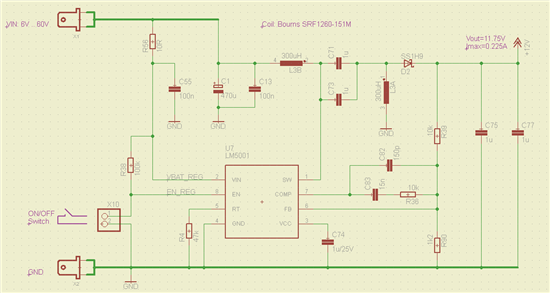Dear TI community and experts,
since LM5001 is not supported by the WEBENCH Designer, i can not find any document describing the best values for external components. Is there really no design guideline available?
I need a wide range imput (9-60V) and 12V, 250mA output, similar to an SEPIC application example given in the LM5001 datasheet but with higher current.
I've tried to simulate the circuit as given in the datasheet, using the model delivered with the startup testbench. But the circuit is not working properly. See the attached image of the circuit.
Florian




